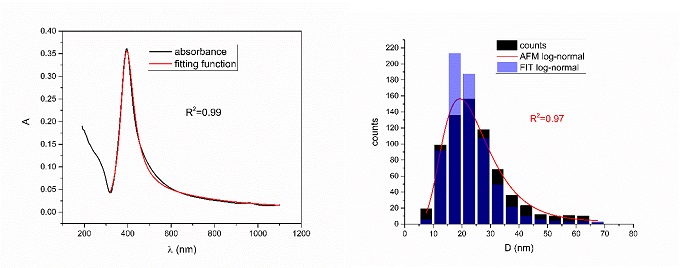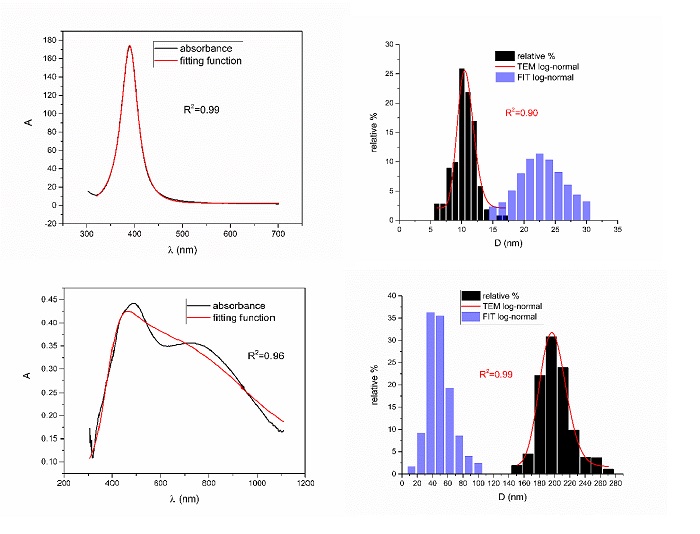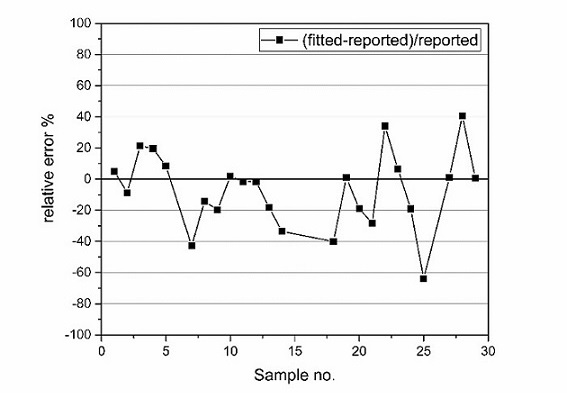This website uses cookies to ensure a better user experience.
To get more information, please read our Cookie Statement.
Fitting procedure to reconstruct the size distribution and the concentration of silver colloidal nanoparticles from UV-Vis Spectra
Our scientist from the PLASAR group Julio Car and Nikša Krstulović developed a method for reconstruction of the size distribution and the concentration of silver colloidal nanoparticles from UV-Vis spectra using fitting function based on Beer-Lambert law, Mie scattering theory in dipole approximation and log-normal size distribution of nanoparticles characteristic for laser synthesized nanoparticles in liquid.
Fitting procedure to reconstruct the size distribution and the concentration of silver colloidal nanoparticles from UV-Vis Spectra
Julio Car, Nikša Krstulović, Nanomaterials 12, 3302 (2022)
DOI: 10.3390/nano12193302
Size and concentration of nanoparticles are two most relevant parameters which describe colloidal system of nanoparticles. Their importance is directly linked to many properties of nanoparticles like mechanical, thermical, electrical, magnetic, catalytic, optical and reactive. These properties furthermore determine efficiency of synthesized nanoparticles in real applications like catalysis, optoelectronics, energetics, sensorics, toxicology, nanomedicine, cancer nanotechnology and antimicrobicity. Silver nanoparticles synthesized by laser ablation of metal target of pure silver in water are used for development of fitting function on UV-Vis spectra in order to reconstruct size distribution and concentration of nanoparticles. Silver was chosen because it’s the best plasmonically active noble metal with localized surface plasmon resonance wavelength (LSPR) greater than wavelengths of interband transitions which makes it low-dissipative with distinct LSPR maximum in extinction spectra. Motivation for development of this solution is avoidance of expensive conventional techniques like TEM, SEM, AFM and DLS for nanoparticles’ size determination but use of easily accessible UV-Vis spectroscopy.
Developed fitting function is based on Beer-Lambert law, Mie scattering theory in dipole approximation and log-normal size distribution of nanoparticles characteristic for laser synthesized nanoparticles in liquid. It consists of 9 physically defined parameters among which mode diameter and standard deviation of log-normal size distribution are the most important. Partial form of developed fitting function is:

Novelty of this form of fitting function is in fact that it doesn’t use any dielectric model like Drude or Lorentz and it introduces correction term for radiative damping due to redshift of UV-Vis spectra. This term is Lorentzian form due to reasons elaborated in paper. Fitting function is tested on 33 colloidal samples of laser and chemically synthesized nanoparticles and is shown very good (R2=0.99) in diameter range [20..90] nm which is verified by TEM. Example of UV-Vis spectrum for which fitting function works well:

Examples of UV-Vis spectra outside range [20..90] nm where fitting function doesn’t give good fitting parameters:

Reasons for discrepancy of fitting function for diameters less than 20 nm originate in quantum-mechanical effects because of sizes less than skin-depth for silver and much less than electron mean free path in silver. Discrepancy for diameters greater than 90 nm arises due to neglect of higher multipole terms in expansion of extinction cross section in Mie scattering theory. Concentrations of silver colloidal nanoparticles are determined based on fitting parameters:

Reasons for discrepancy are in fact that concentration of nanoparticles was experimentally measured by ICP-MS and then calculated using density of bulk silver and average volume per nanoparticle. In summary, advantage of developed fitting function is its analytical form and high interrelation between fitting parameters which output small standard errors of parameters.




